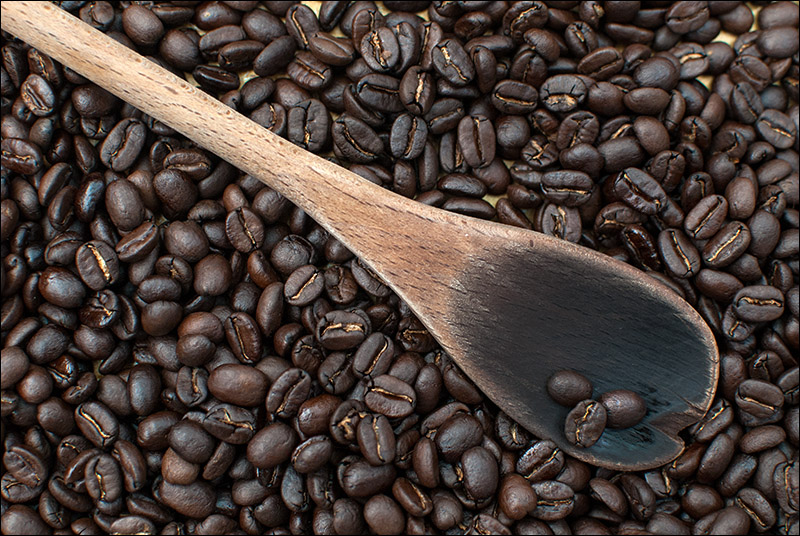 |
| Bolivia Organic Buenavista #1738. © Ryan Schierling |
There are basic human rights in this world – life, liberty, security, available food and water. Last year the United Nations added internet access to the list, but I think coffee is globally, culturally more important than that. Which would cause widespread rioting first – taking away our coffee, or taking away our wi-fi?
I'm betting on the bean.
It was tough living in a town that was lousy with badass baristas in every corner coffee shop. You could get the best hand-pulled doppio of your life – as long as you didn't stumble into a Starbucks – any time, anywhere. Seattle is the town that put coffee snobbery on the map.
Now, I've never really been one to fawn over a perfect mocha, or gush about how incredible so-and-so's milk foam latte art was (but... El Diablo Coffee Co., very impressive...). Most mornings, I just want a good cup of drip coffee, hot and black, to clear the cobwebs. That's a basic human right. There's a lot of garbage coffee out there, pre-bagged and sitting on grocery store shelves for months, or bulk beans far past their prime in plastic dispensers.
Fresh coffee is freshly-roasted coffee. It is aromatic and alive, elegant and just a little bit exclusive… typically not grocery-store gotten. It is also a little expensive if you're buying it bulk at your neighborhood coffee shop. I did this for a while, purchasing pounds of dark roasts from far-flung locales, and we eventually relegated those roasts to "weekend only" drinking. There have been times, for frugality, weekday drip was out of a commercial coffee tin. Who knows what was in that pre-ground mix? Coffee beans? Sawdust? Pulverized olive pits? Gun metal shavings? It was merely a caffeine delivery device, and a pretty poor one at that.
But, I realized, it didn't have to be that way. There was also a part of me that wanted to buck the system a little, sidestep the coffee shop klatch, and just roast it myself. Those of you who make your own wine, beer, charcuterie or cheese (all highly noble DIY pursuits, as far as I'm concerned) understand this sentiment completely. Thankfully, coffee roasting in the most basic form is easy, inexpensive and very satisfying.
You could spend upwards of $1,000 on a fancy home drum roaster if you're into the hands-off automated bells-and-whistles rigs, or as little as a few dollars for a hands-on thrift-store popcorn popper. There are roasting drums that can be used in your gas grill, and if you're a little bit crazy, you can use a heat gun and a metal dog bowl. Old school style is a cast-iron skillet and an open flame. There are quite a few ways to go about this.
For me, a good day at the thrift stores many years ago provided a trio of air popcorn poppers suitable for roasting green coffee beans. There was a retired wooden spoon for stirring, we had a wire-mesh strainer that I could pour the roasted beans into and shake any chaff off, and I scavenged an old dual-layer jelly roll pan for spreading and cooling of roasted beans. Green coffee beans were ordered from Sweet Maria's in Oakland, California. (Thanks to Eric Greenlee for guiding me down this path.)
 |
| Tools, and a box of green beans. © Ryan Schierling |
Here in Austin, I'm using the same air popcorn poppers. (Note the directional air vents around the bottom of the chamber. Poppers with screens at the bottom will not work for roasting coffee... you'll end up with a fire and a pile of carbonized beans.) They provide a fluid-bed roast and a fairly abbreviated roast time of eight to twelve minutes, though two of my higher-wattage poppers will blast out a Full-City+ roast in four minutes (with constant stirring) if the ambient air temperature is above 85-degrees, which it frequently is here in Central Texas. So, it doesn't take long at all to roast a pound or two of coffee between three poppers that will last us for a good solid week – be it espresso for the Bialetti, French roast for the French press or straight-up coffee-maker drip.
Roasting your own coffee is a noble pursuit. If you enjoy a good cup, and are a DIY, home-made, hands-on type, I highly recommend it. You can lose a day or so learning the ropes... be warned.
 |
| Roasting on the back deck. © Ryan Schierling |

No comments:
Post a Comment
We welcome comments. Thanks for your patience as we moderate to avoid spam and other internet foolishness.